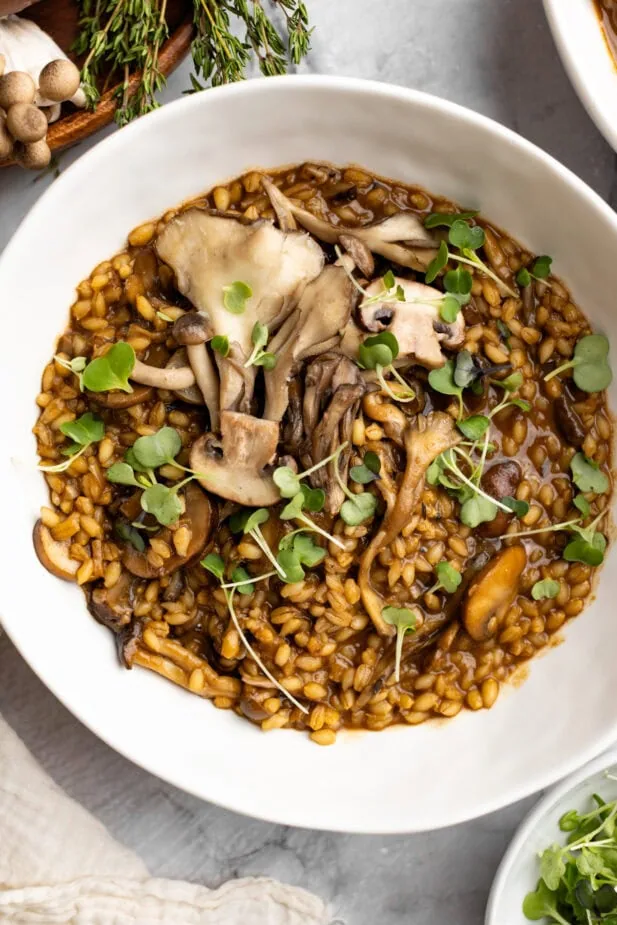 December 16, 2024
Pasta, Noodles & Grains
December 16, 2024
Pasta, Noodles & Grains  December 16, 2024
Pasta, Noodles & Grains
December 16, 2024
Pasta, Noodles & Grains Cheesy, pillowy, and soft — with just a handful of ingredients and a tad bit of patience, you have these restaurant-quality spinach and ricotta gnudi. Paired with a bright lemon herb butter sauce, these velvety gnudi are perfect for date night, entertaining, or even Sunday dinner. A recipe that’s sure to impress.

Also known as malfatti, gnudi directly translates to “naked” and is essentially ravioli without the pasta. Soft, pillowy, and cheesy, gnudi, despite their name sharing a reseblence, has more in common with a dumpling than with potato or ricotta gnocchi, which tend to be more dough-like.
Perhaps you found this recipe through my Gnudi in Spicy Red Sauce. While both recipes share a similar base, this version is packed with spinach and finished in a delicate butter, lemon, and herb sauce that cuts through the richness of the cheese. Though this recipe is a bit more technical and time-intensive than some of my others, it’s still approachable—and as long as you follow the steps, this rustic dish is relatively easy to make.
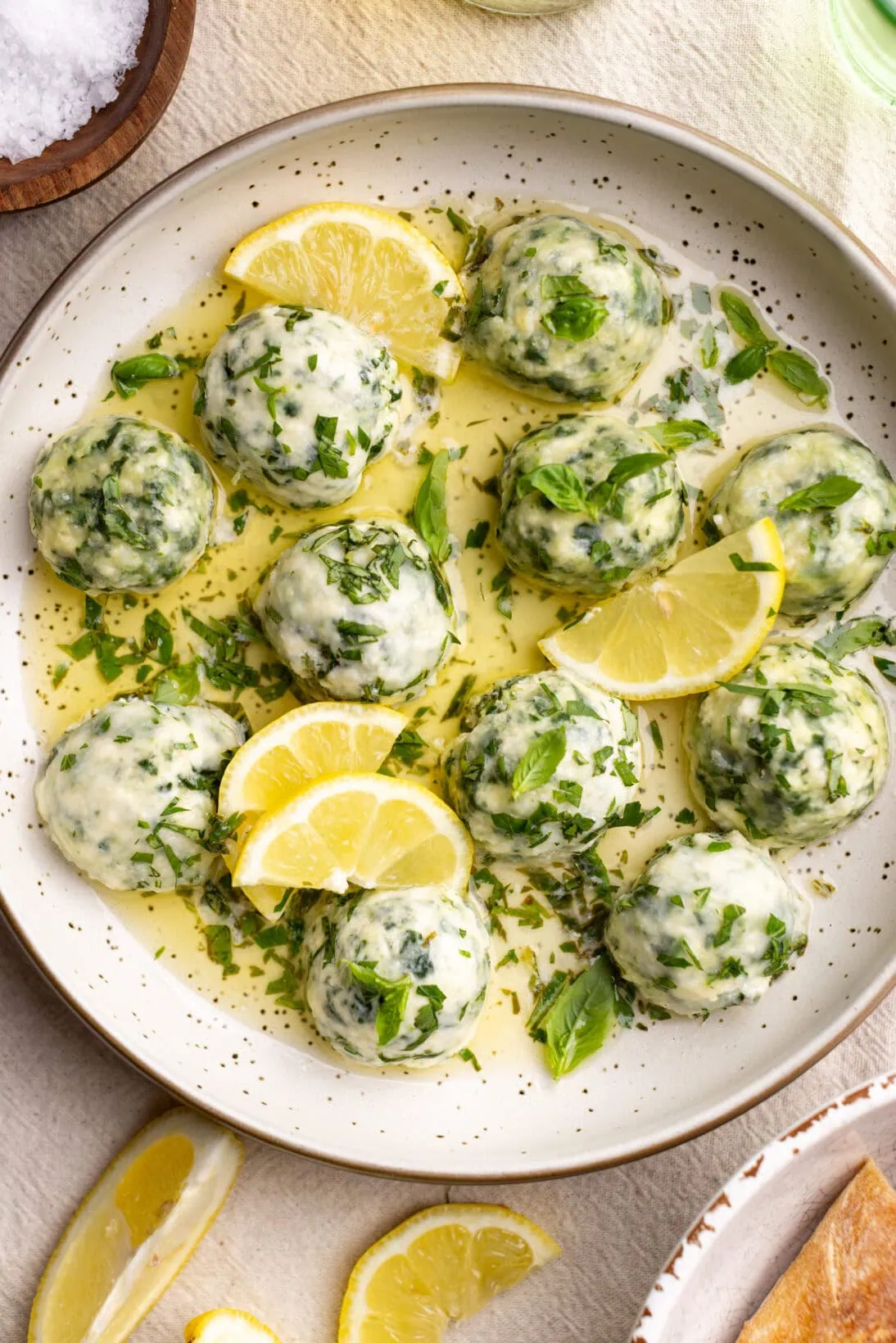
Notice the placement of this section—it’s coming before the how-to because I really want you to read it first. Unsuccessful gnudi is frustrating, but there are ways to prevent these cheese dumplings from falling apart. Below are my tips for successfully making spinach and ricotta gnudi.
If you are impatient, this recipe isn’t going to work for you. Resting the gnudi is one of the most important steps. After forming, these ricotta balls need to sit on a sheet tray in the fridge, uncovered for a minimum of 1 hour to allow the outside to cure, forming a protective skin to hold in the creamy ricotta inside. Personally, I prefer closer to 2 hours, but 1 hour should be sufficient. We do this uncovered because covering them can trap moisture and make the gnudi too wet.
As I mentioned above both store bought and fresh ricotta work for this recipe, but its the moisture levels here that matter. Typically (not always) higher quality ricotta has a higher moisture content, which leads to a looser gnudi. Its essential to strain a wet ricotta in a fine mesh strainer or cheese cloth for a few hours before hand, to remove any unnecessary moisture.
A wet gnudi will fall apart during cooking, no matter how long you rest it in the fridge. If your ricotta is still too wet after straining, you can adjust the flour. The recipe includes an optional extra 1/4 cup of semolina for exactly this reason.
To tell if your gnudi will survive, form into a ball. Are they soft yet still firm? Yes, then they will most likely survive. Can you place it down without it loosing its shape? No, then chances are they will not survive.
So many recipes call for you to toss them into boiling water to cook. That’s too aggresive. Gnudi need to be cooked in slightly simmering water, yes it’ll take a hot second longer but they will have a better chance holding. I also don’t wait for them to float, instead I finish them up in the sauce.
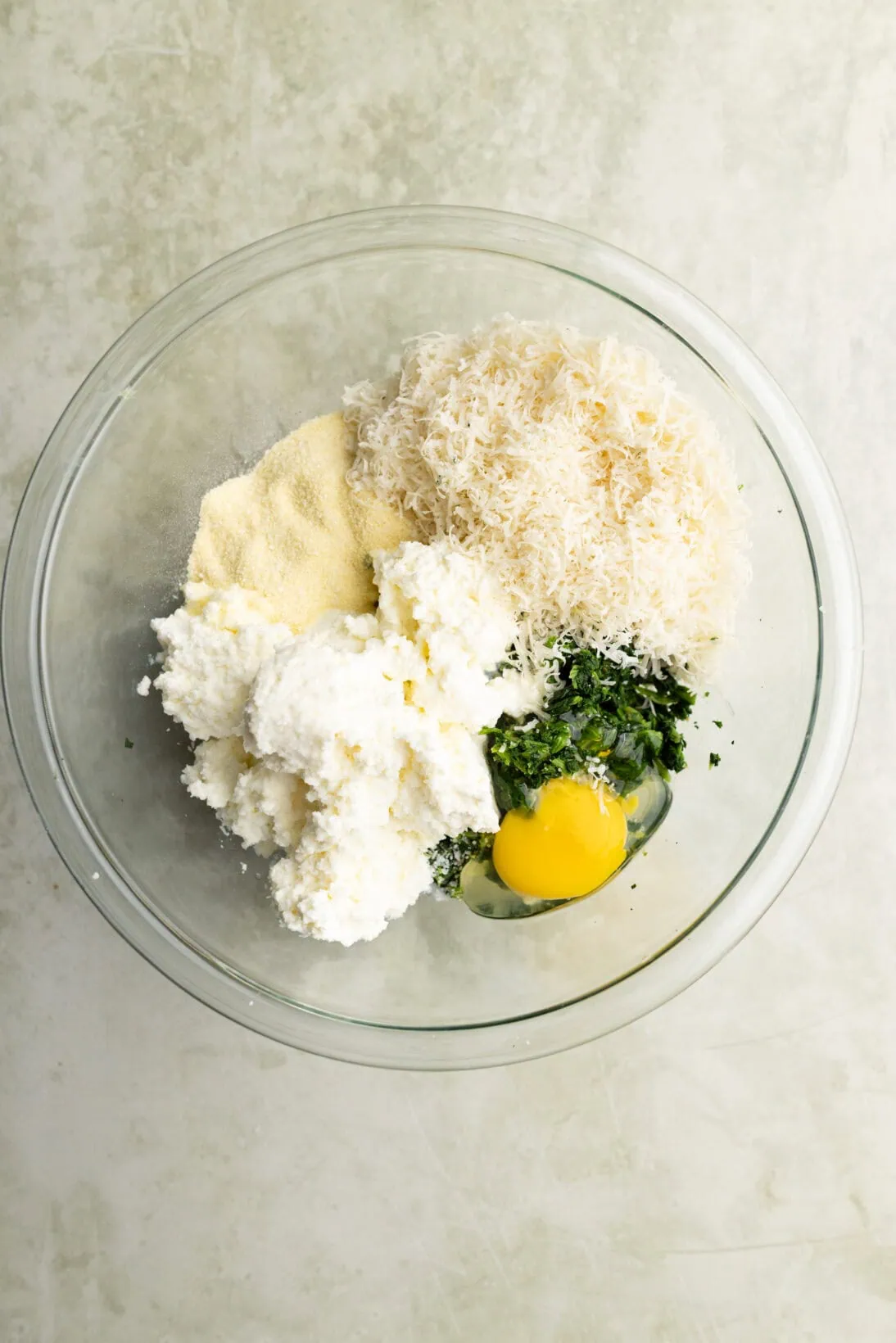
Form the Gnudi – Before combining, defrost the spinach according to the package instructions. Then, using a cheesecloth, fine mesh strainer, or heavy-duty paper towels, squeeze out as much excess water as possible. DO NOT skip this step! Too much moisture will result in loose gnudi that won’t set or cook properly.
In a bowl, combine the ricotta, well-strained spinach, Parmesan cheese, semolina flour, egg, and 1–2 generous pinches of kosher salt (depending on how salty your ricotta is). Mix with your hands until everything is fully incorporated. Using a 1-tablespoon cookie scoop, portion out the gnudi either in 1 tbsp or 2 tbsp balls and roll each one in flour to coat evenly. Shake off the excess and place them on a sheet tray to rest.
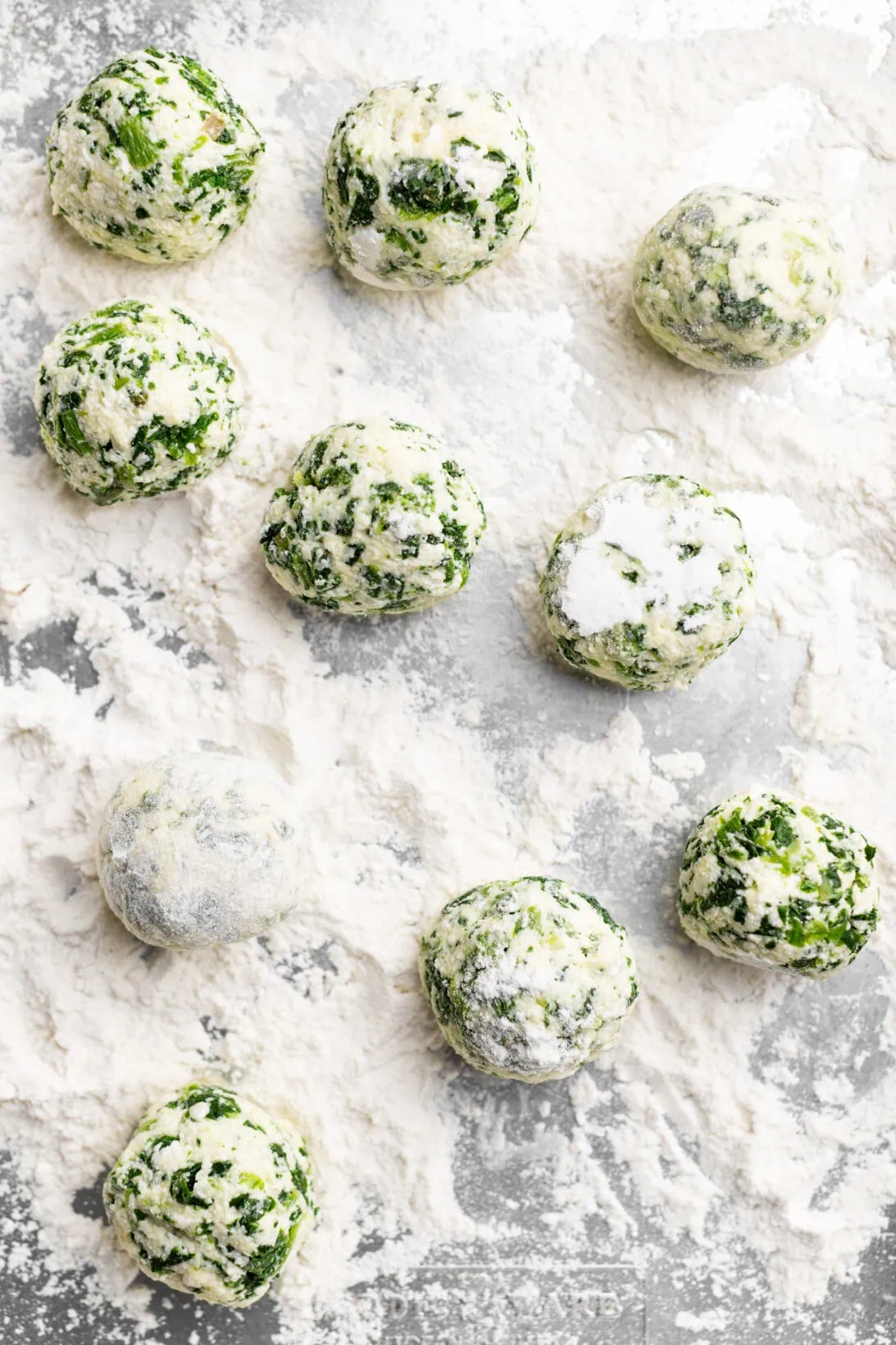
Rest – This part might feel a bit tedious, but it’s important—now it’s time to rest the gnudi in the fridge. Why? Because during this time, they develop a light crust on the outside, which helps prevent them from falling apart when simmered later. I rest them uncovered in the fridge for at least 1 hour.
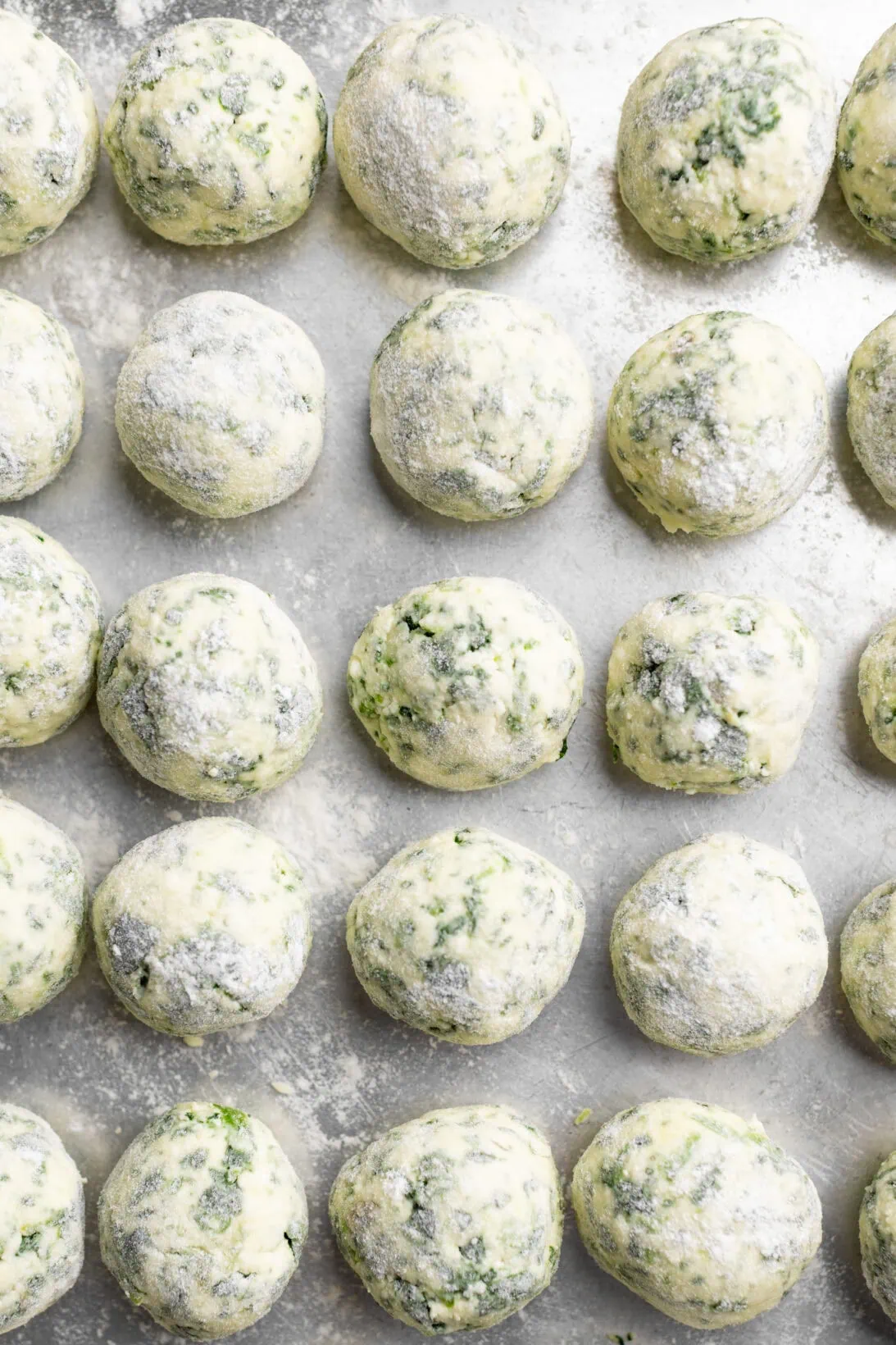
Make the Sauce – Before simmering the gnudi, make the sauce. In a sauté pan, melt the butter. Once melted, add the lemon juice and a pinch of salt. The herbs will be added later, once the gnudi are in the pan.
Simmer the Gnudi- See, I didn’t say boil. You want to cook these gently, so when heating a large pot of water, bring it just to a bare simmer and maintain that temperature throughout. Working with a few gnudi at a time, gently place them into the pot and cook for about 3–4 minutes, depending on their size. Some recipes say to wait until they float, but I find they tend to break apart by then. I recommend gently nudging them after about a minute to prevent sticking to the bottom.
Finish the Dish – As the gnudi finish cooking, use a slotted spoon to gently transfer them from the pot into the lemon butter sauce. Once all the gnudi are in the pan, add the herbs and let everything cook together for 1-2 minutes to finish. Serve immediately.

Gnudi need to be enjoyed right away. Leftovers can be stored in the fridge for 2-3 days in an airtight container, and either be enjoyed cold, or microwaved in 30 second increments until warmed but not overcooked.
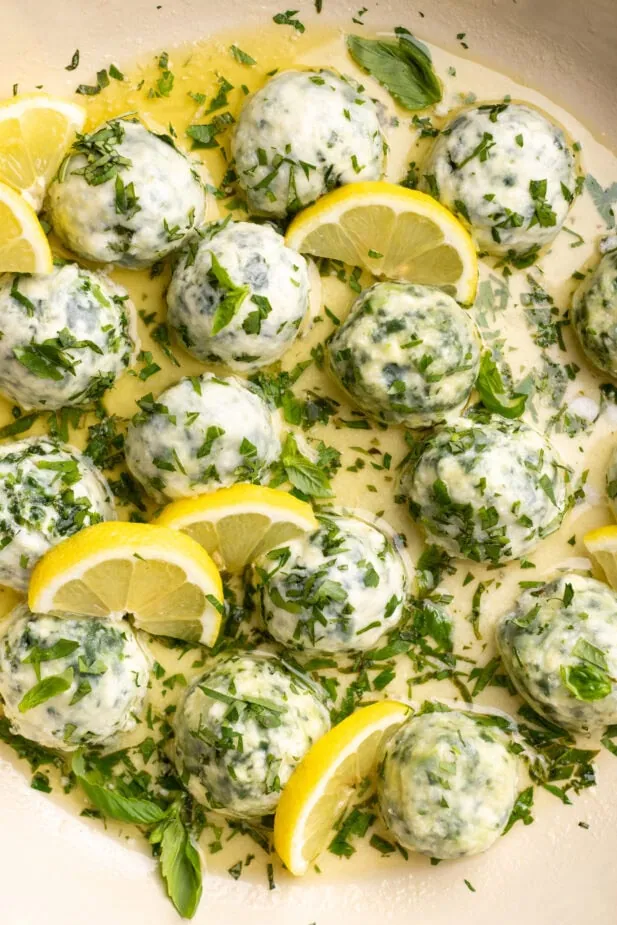
I never made gnudi before but I absolutely loved trying this recipe out!!! It was flavorful, cheesy, and very easy to put together!